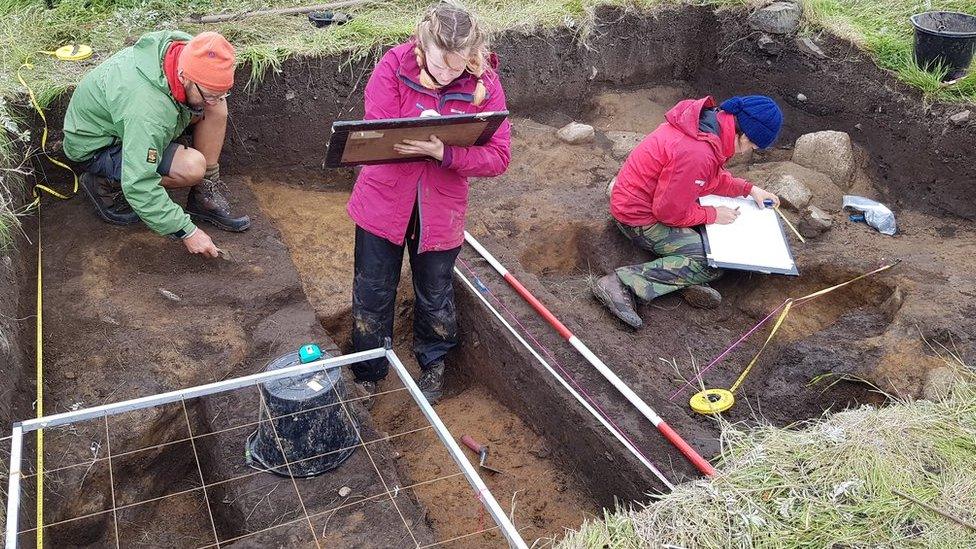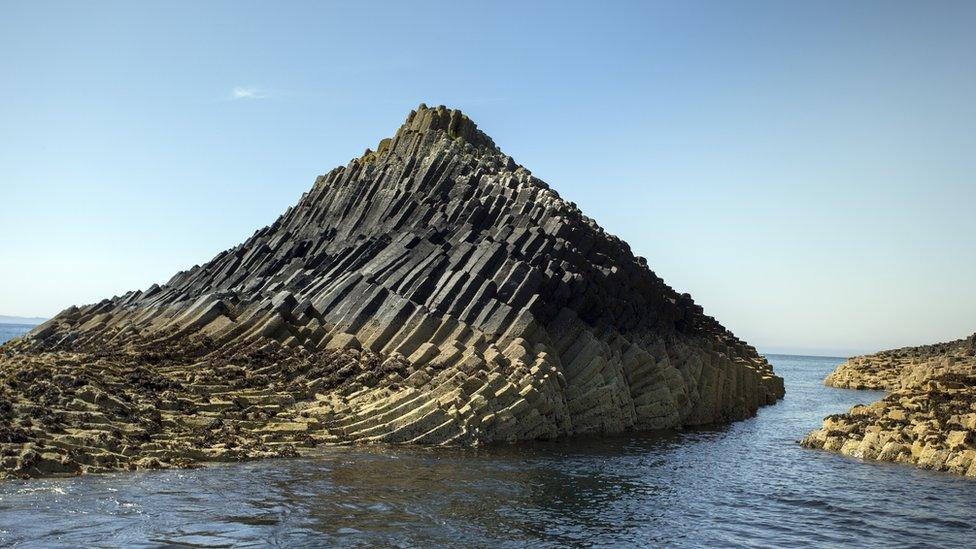'Clear evidence' of Bronze Age activity on Staffa
- Published

Archaeologists have uncovered evidence of a Bronze Age structure
Archaeologists say they have found the "first clear evidence" of Bronze Age activity on Staffa, off Mull, in the Inner Hebrides.
A fragment of decorated prehistoric pottery was found on the island, known for its unusual geology, including Fingal's Cave, in 2016.
Last week, a larger trench was excavated.
It revealed the western side of a structure defined by a series of ditches and pits.
A burnt grain of hulled barley found in 2016 was radiocarbon dated to 1880-1700 BC.
This along, with the other finds such as more pieces of pottery, have led archaeologists to suggest that people were visiting, and probably living, on Staffa in the Middle Bronze Age.

Staffa is famed for its unusual geology
The Historic Archaeology Research Project, Staffa, a partnership involving a number of organisations including the National Trust for Scotland, The Glasgow School of Art SimVis and universities of Glasgow and Stirling, has been leading the study.
Derek Alexander, the National Trust for Scotland's head of archaeological services said: "This is our fifth season out at the island to investigate its past.
"Each time we go there we add another little piece of the jigsaw.
"It seems likely that people in the past were just as curious about their surroundings as we are. We can only imagine what Bronze Age people may have thought of the geological marvel that is Fingal's Cave.
"Our next objective is to understand whether this evidence represents domestic occupation on the island or something a bit more ritualistic."